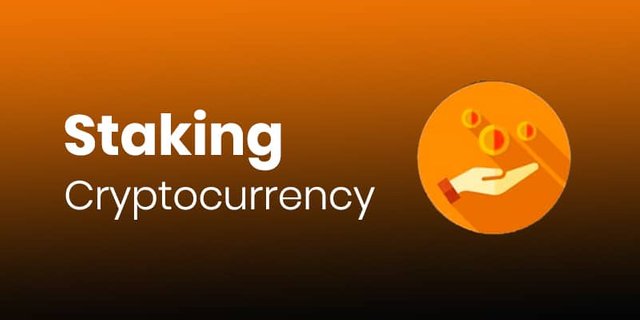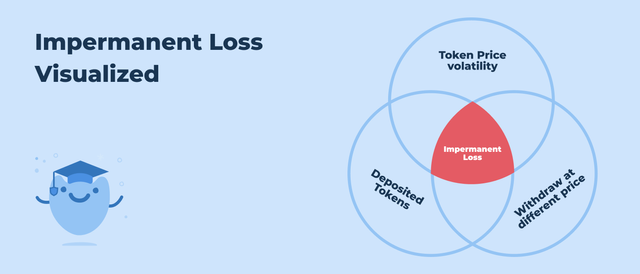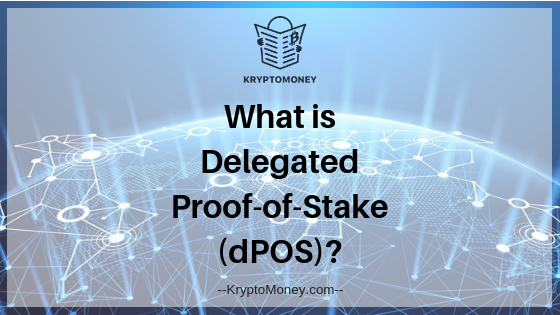Crypto Academy / Season 3 / Week 1 - Homework Post for [@imagen]
Welcome to my homework task of @imagen.

Blockchain works with many principles. Principles such as Proof of Brain, Proof of Work and amongst others. But the Proof of stake is another one that seem more appreciated than especially the proof of work.
Proof of Stake is the concept whereby a miner is selected as a validator transaction block based on the number of tokens they hold. The higher your crypto assets, the higher your chances of being selected a validator. Just like in Steemit, the higher your Steem power, the higher your voting power. Same as in Proof of Stake, the higher your holding tokens, the higher your mining power.
Staking
Talking about Proof of Stake leads us to Staking. Staking is the process of actively participating in validation on Proof of Stake blockchain. Actively participating in Validation means, when a user blocks his or her assets to help the Proof of stake concept. With this regard, the number of tokens you hold is directly propositional to your chances of your node being selected to make up the next transaction block. Those staking are being reward for their works because that’s wat keeps the blockchain functioning effectively.
Poloniex as a staking platform
In Poloniex, customers earn by depositing and earning assets in their accounts. Staking rewards are being monitored daily on each asset with snapshots.
To earn, you buy or deposit your in your account in Poloniex. You then hold after every snapshoot of your balance and then earn each day as you hold your assets in your account. The snapshoots are used to monitor how the amount of asset hold during the day.
With Poloniex staking, clients earn rewards whilst preserving the ability to exchange, deposit, and withdraw in any respect times. Along with this flexibility, clients can preserve to earn staking rewards until the time they wish to trade their rewards into different asset. If you return your rewards into your account after every stability snapshot, you will always obtain rewards irrespective of how you operate them in among snapshots. This interesting new method gets rid of a barrier that till now, has averted maximum investors from profiting from staking.
Poloniex stakers earned rewards with Very competitive returns, Freedom to trade, to deposit and withdraw at any time, no blocking period for your funds and no opt in required. The assets that can be staked on Poloniex are Cosmos (ATOM), TRON (TRX), BitTorrent (BTT) and WINk (WIN). Each one of these come with their own benefits and how often snapshoots are taken
| Asset | Minimum | Time for snapshoots | Rewards time | Staking fee |
|---|---|---|---|---|
| Atom | 1 | Regular | Daily rewards | 25% |
| Tron | 100 | 4 daily | Bi-weekly | Free fee |
| BitTorrent (BTT) | 1,000 | 4 daily | Bi-weekly | Free fee |
| WINk (WIN). | 5,000 | 4 daily | Bi-weekly | Free fee |
To stake with Poloniex,
- Click here

Sign up

Buy or deposit
Its now time to hold and earn.
Staked.Us
This is a staking platform with over staking on over 30 staking tokens including Ethereum, Synthetix Network, Livepeer and others. This platform provides 5% - 100% rewards on staking tokens. There is a 5% - 10% charge on staking tokens. Due to this, they employ the Robo Advisory Yield (RAY) to help stakers understanding their staking policies.
In Staked.Us, a customer can’t buy tokens directly from the platform. Each validator requires a minimum of 32 ETH
To stake with Staked.US,
Click here

Sign up

You then make a deposit of at least 32 ETH
Wait to be activated then you start earning.
Comparisons between Poloniex and Staked.US
- In Poloniex, there are no charges on the staking tokens whiles there is about 5% -10% charges in Staked.US
- Whiles a client can buy stake tokens directly in Poloniex platform, a user can’t buy stake tokens directly in Staked.Us
- Poloniex uses snapshots to monitor holding assets while staked.Us also uses automated monitoring tool.
I will choose to stake with Poloniex because
- They are charges free when staking
- You have the freedom to trade, deposit and withdraw at anytime
Looking at my reasons, we can see Poloniex is more profitable. Since there are no charges when staking. Also having the free well to do business anytime you wish.
Impermanent loss

S
As Automated Market Makers prioritize ratio balance, price of an asset in a liquid pool can differ from its price outside the pool. This leads to Impermanent loss. Impermanent lost is therefore the concept whereby the AMMS algorithmically driven token formula creates a divergence between the price of an asset within a liquid pool and its price outside the liquid pool. In this case, the loss means less dollar value at the time of withdrawal than at the time of deposit.
If there is impermeant loss why do investors still deposit in liquid pools? The reason is, traders buy from the liquid pool and there is a trading fee on assets bought from the pool. As a result, anyone with assets in the pool gets a bonus anything someone buys from the pool.
Delegated Proof of stake. ( DPoS )

S
Proof of stake is where a user himself becomes a validator but in delegated proof of stage it works differently. Delegated Proof of Stake is the concept whereby clients vote and elect block producers. Unlike in Proof of Stake where a validator and a block producer are assigned to a client with more tokens, in DPoS they are different roles assigned to different clients. In DPoS, clients vote on delegates by staking their assets in a staking pool and hen join it to a particular delegate. Clients make use of staking service providers to stake their tokens into a staking pool instead of sending their tokens to another wallet. The limited number of delegate rankings between 20 and 100.
A delegate runs a new block. Elected delegates are those who receive the transaction rewards from the validated block. Since its coming from a stake pool, this transaction fee is then shared among those who have a share in the staking pool. Each client receives his or reward in the percentage of tokens they have invested in the staking pool. An example is, if a client’s tokens is made up of 25% of the staking pool, then that client receives 25% of the transaction fee. The higher your token in the staking pool, the higher your percentage of the transaction fee.
Difference between PoS and DPoS
In DPoS, validation of transactions is faster as compared to PoS.
DPoS is energy efficient and uses less hardware as compared to PoS.
Conclusion
Staking is the business type in crypto market which is use to mean saving in banks and waiting to gain interest on them. This is only different from it from the way where people with higher tokens are considered not everyone.
This is a good course and I am glad I took part. Thanks to @imagen for a course well thought.
Hi @pandev. Thank you for participating in Steemit Crypto Academy Season 3.
I congratulate you, you did a great job and demonstrate mastery of the topics requested in the assignment.
I look forward to continuing to correct your next assignments.
Rating: 8.5
Thank You.
I will surely be doing your next assignment!